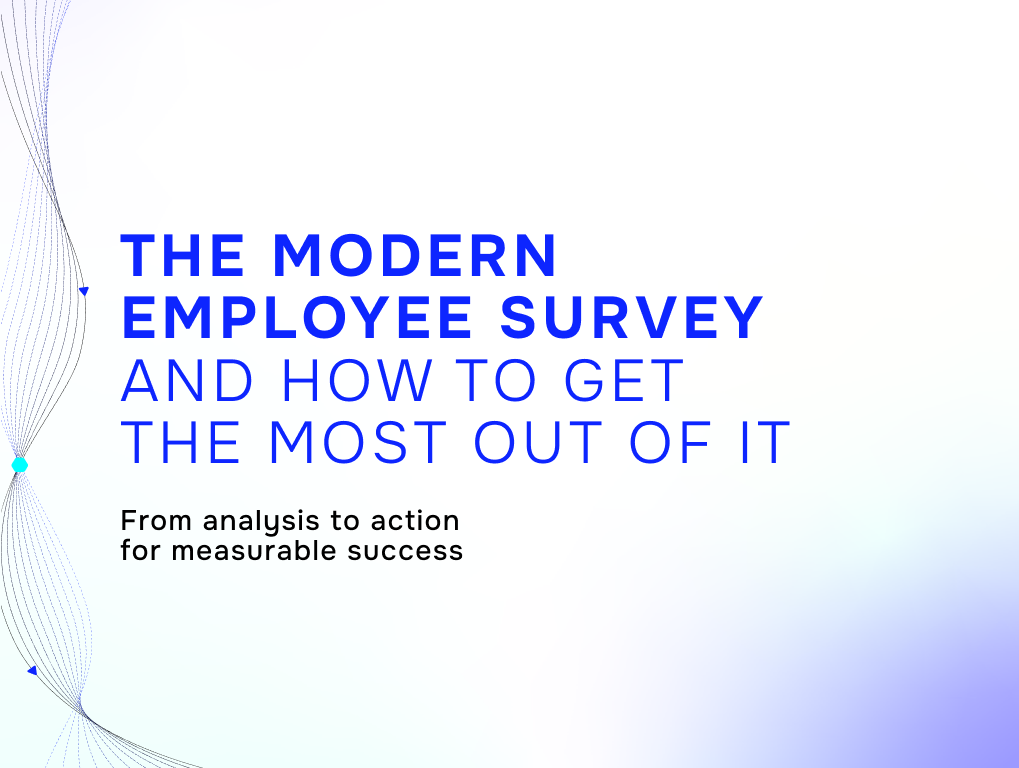Despite significant investments in employee retention, the dissatisfaction among Millennials and Gen Z persists. According to a recent ResumeBuilder survey of over 1,340 executives, many Generation Z employees (born between 1995/1997 and 2012) are perceived as unmotivated and disengaged. Many companies continue to rely on outdated concepts that no longer work in the modern workplace. Let’s explore what truly drives engagement – and what HR professionals can do about it.
The numbers speak for themselves: According to the HR Insights Report 2024 by Personio, 70% of companies report a decline in employee engagement. What can be the consequences? Higher turnover, reduced productivity, and serious business risk.
Replacing a skilled worker isn’t cheap—it costs, on average, 90–200% of their annual salary. This means for every employee earning €50,000 replacement will cost a staggering €45,000–100,000 per worker. These expenses arise from recruitment, onboarding, productivity gaps, and the loss of valuable knowledge.
While older employees often remain steadily engaged, Millennials and Gen Z are feeling increasingly disconnected. Is it outdated incentives? A lack of flexibility? Or simply the fact that companies are underestimating the expectations of these generations?
This article examines the root causes and highlights strategies companies can use to retain Millennials and Gen Z in a sustainable way – with flexible, data-driven solutions that have a real impact.
The Engagement Crisis: Millennials vs. Gen Z
Let’s take a look at how engagement has developed across different age groups from 2020 to 2023:
Generational Shift in the Workplace: Engagement in Transition
It has been noted for several years that young employees’ engagement at work has been declining – significantly more than compared to the older generations. While Baby Boomers remain stable or even become more engaged, Millennials and Gen Z are increasingly losing connection to their employers.
Which one is the most affected group? These are the older Millennials (born between 1980 and 1988): their engagement dropped from 39% to 32%, while the share of actively disengaged employees rose from 12% to 17%. Younger Millennials and Gen Z (born after 1989) also saw a five-percentage-point drop in engagement.
Let’s take a closer look at the factors that truly influence engagement:
Key Factors Influencing Engagement and HR KPIs
Internal studies reveal how different engagement factors impact HR key performance indicators (KPIs), such as emotional commitment and employee retention. Our data quantifies the HR factors that are statistically linked to employee retention and long-term tenure.
The strongest correlation (β = 0.493) is seen between physical engagement and emotional commitment to the company. The next most significant influence (β = 0.438) is between emotional engagement and retention intention.
The key influencing factors are:
- Physical engagement (β = 0.493)
- Emotional engagement (β = 0.438)
- Cognitive engagement (β = 0.177)
Other influencing factors include:
- Challenges (β = 0.093)
- Opportunities for further training (β = 0.123)
- Working conditions (β = 0.123)
Example: The correlation between employee engagement and job performance is β = 0.480, which is significantly higher than the statistical correlation between ibuprofen and pain reduction (β = 0.140).
Loyalty can be built by providing purpose, development, and support. . Therefore, companies that want to retain employees must invest in these areas.
Companies that effectively motivate young talent follow these seven strategies:
7 Strategies to Boost Employee Engagement
Successful companies rely on modern strategies to retain Millennials and Gen Z in the long run. Traditional incentives are no longer enough – now purpose, development, and flexibility are the key factors. There’s no one-size-fits-all solution: Each company is unique, and the key is to actively ask employees what they truly need.
The following seven strategies showcase how successful businesses sustainably motivate young talent:
1. Embed Vision and Purpose Clearly
Employees are often interested in understanding the impact of their work. For this reason, a company should propose a clear vision to promote identity and motivation in employees.
Examples: Regular town halls, storytelling campaigns, and leaders as role models.
2. Actively Support Career Growth
Personalized development opportunities foster long-term commitment. Companies should invest in career paths that increase growth opportunities for their workers.
Approaches: Mentorship programs, learning budgets, transparent promotion opportunities.
3. Leverage Flexibility as a Competitive Advantage
Flexible work models boost productivity and satisfaction. Results matter more than hours spent in the office.
Concepts: Outcome-based work, personalized schedules, asynchronous communication.
4. Shift Leadership from Control to Coaching
Inspiring leadership is built on trust and autonomy, not micromanagement.
Implementation: Regular growth talks, coaching-oriented leadership training, more decision-making freedom.
5. Make Diversity & Inclusion Core Values
Diversity fuels innovation and engagement. Companies must ensure real equal opportunities.
Actions: Bias training, sponsorship programs, employee networks for underrepresented groups.
6. Offer Benefits with Real Value
Employees expect support that significantly improves their quality of life.
Effective approaches: Mental health programs, flexible parental leave, stock options.
7. Measure Employee Engagement
Employee engagement isn’t random – it can be measured, analyzed, and improved.
In our article “Employee Engagement 2025: Key Trends at a Glance,” we explore additional solutions to boost engagement.
Summary
Attractive benefits alone aren’t enough to foster long-term engagement – companies must understand which measures truly make a difference.
Engagement is dynamic and evolves with new expectations, trends, and conditions. While financial incentives were once the main driver, today’s key factors are flexibility, purpose, and development opportunities – especially for Millennials and Gen Z.
Companies that focus on these factors not only strengthen their employer brand but also gain a better competitive advantage.
But how can engagement be measured and systematically improved?
Boosting Engagement with Data-Driven Insights
Companies that strategically manage employee engagement benefit from more motivated teams and better business results.
The question arises: how can engagement measures be effectively implemented?

The atwork platform captures real-time engagement and links it to other critical metrics at play within the organization. For instance, automated surveys provide precise insights into employee satisfaction and motivation. Moreover, data-driven analytics reveal patterns and connections for HR management and leadership.
The dashboard clearly shows which factors influence employee engagement – from workload management to leadership culture.
Companies can immediately identify which levers to adjust to increase motivation and productivity in a sustainable manner.
If your company is struggling with low engagement, the atwork suite offers precise predictive analytics that pinpoint the root causes. Furthermore, help businesses implement targeted measures – ranging from optimized work models to strengthening leadership culture.
With intuitive dashboards, HR managers gain a clear overview of which measures have the greatest impact on motivation and business success.
Only measurable engagement creates a sustainable foundation for long-term success and a strong corporate culture.
Want to unlock your team’s full potential?
Book a demo to see how atwork can help drive employee engagement!



